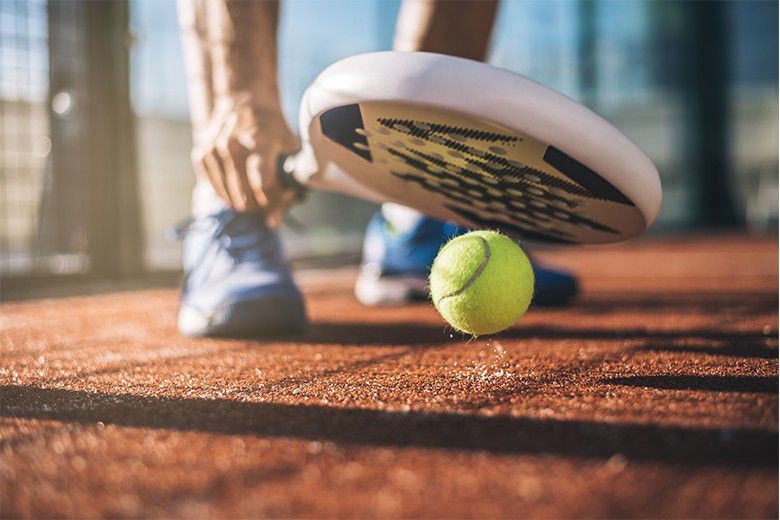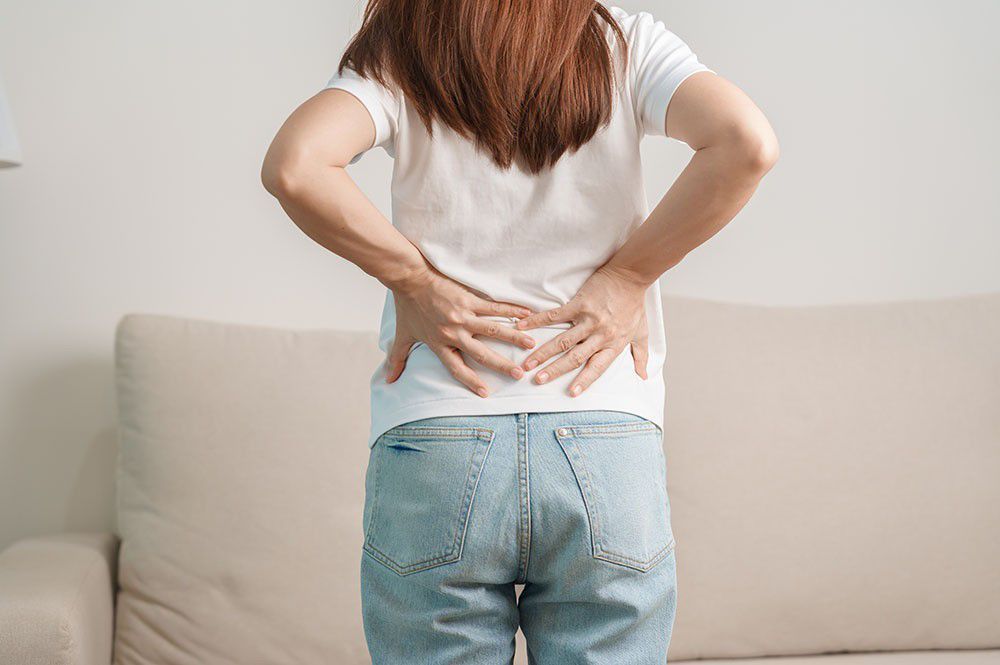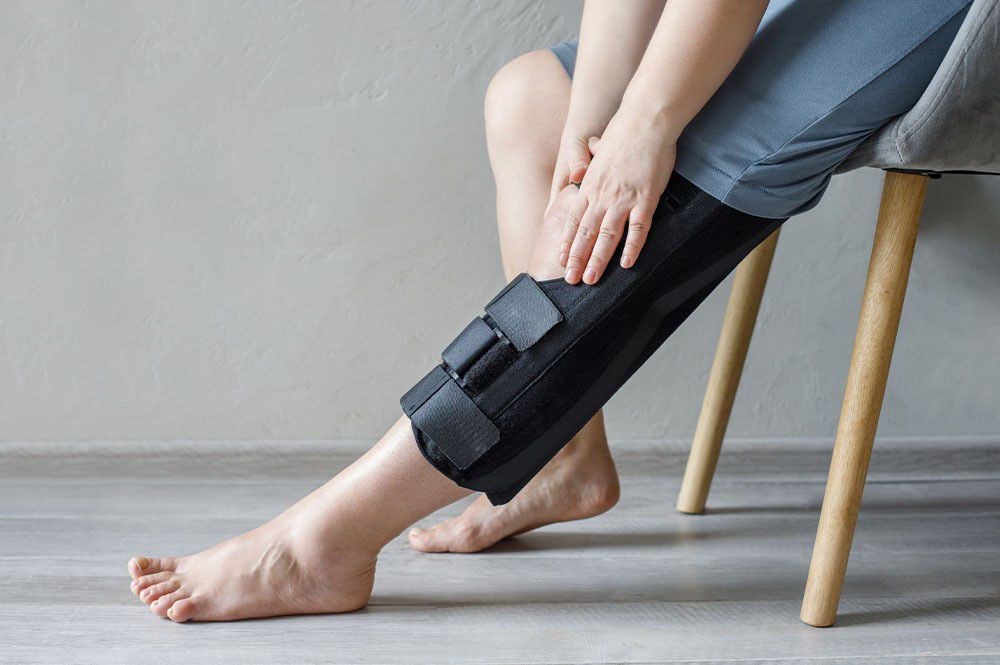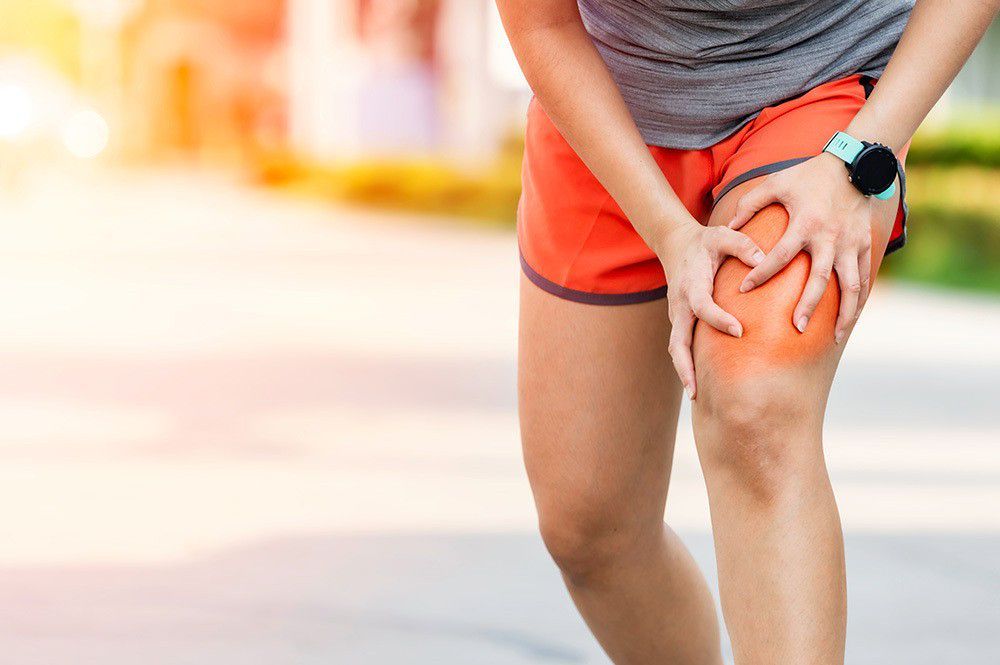Padel and injuries

- 1 Padel
- 2 Injuries
- 3 Prevention
- 4 Shoulder Injuries
- 5 Elbow Injury
What is Padel?
Padel (from the Spanish pádel, in turn from the English paddle) is a tennis-derived ball sport.
It is played in pairs in a rectangular court enclosed by walls on four sides, except for the two side entrance gates.
Padel players use a racket with a rigid plate and pass each other a tennis ball with a lower internal pressure, allowing for greater control of shots and rebounds on the banks.
The peculiarity that differentiates padel most from other tennis-derived disciplines is that the walls bordering the court are part of the playing area. If the ball bounces off the walls, it can be repelled with the racket.
Due to the rule that the walls are valid when the ball bounces,
this speciality is similar to ‘pallacorda’, or ‘court paume’ or ‘real tennis’ or ‘court tennis’.
On almost all courts, the walls are made of glass so that the public can see the match. On the ‘panorama court’, the centre back glass supports are replaced with very small hooks for a better view.
The court is 20 m long and 10 m wide, with a boundary wall of 3 m high on most sides and 4 m high on the back wall.
The portions of the wall furthest back from the net are made of a metal grid that makes rebounds unpredictable, while the remaining panels are generally made of glass.
The objective is to hit behind one’s service line from underneath (unlike in tennis) and bounce the ball on the ground first.
The serve must follow a diagonal trajectory towards the opponent’s opposite serving area, hitting it with a forehand or backhand.
Except for the return, players may hit the ball by catching it on the volley or after the first bounce on their court; the ball may hit any number of banks after the first bounce, but a second bounce on the ground will decree the point for the opponent, as in tennis. Under this rule, players can leave the playing area to retrieve the ball before it makes its second bounce.
In addition, players are allowed to send the ball against the glass portion of the wall of their own half-court so that the ball passes over the net toward the opponent’s court.
Once over the net, the ball must always first bounce on the ground to be in play, so it cannot touch the wall delimiting the opponent’s half-court on the fly, as it would then be considered out.
Padel: History
In 1962 in Acapulco, Mexican Enrique Corcuera wanted to build a ‘pop tennis’ court in his home’s courtyard. Since he had walls right next to the space available to lay out the court,
he came up with the idea of considering the walls as an integral part of the playing field.
Corcuera then regulated the new game and called it padel.
In 1991, the ‘International Padel Federation’ was born to manage the various tournaments run worldwide.
Padel and injuries
Padel mainly needs physical fitness (explosive strength, endurance, speed, agility),
combined with coordination, tactical-cognitive skills, ball sensitivity, and good ‘hitting’ technique. For players at a higher level, mental strength is of crucial importance.
Since it is not a contact sport, it is not considered risky.
The aerobic and anaerobic requirements of padel, combined with the variety in types of strokes, result in an injury profile similar to the one of tennis (Pluim BM, et al. 2006).
Continuous changes of direction, fast and sudden sprints, abrupt stopping and starting movements, and repeated strokes result in acute injuries and/or injuries and chronic disorders.
Depending on the studies, the probability of injury is between 0.04 and 3 injuries per 1,000 playing hours.
Over the last few years, the popularity of padel has meant that articles and scientific studies on injuries in this sport have also multiplied.
Most of the published works concern the musculoskeletal system (82%).
Several studies have concluded that the lower extremity is the most frequently injured area, followed by the upper limb, trunk and lastly, the head:
1. lower limb (59%)
2. upper limb (26%)
3. trunk (13%)
4. head (2%)
In the lower extremity, the ankle (30%) and thigh (13%) were the most frequently injured; the shoulder and elbow showed the highest frequency in the upper limb, and the lower back was the most commonly injured body part in the middle ‘core.’ Muscle injuries were the most common type, followed by inflammation and sprains.
Acute injuries to body structures involving ligaments comprised more than a third (36%), followed by muscles (32%) and tendons (10%).
As far as chronic injuries are concerned, about two-thirds of injuries (63%) are to the upper limb, with the most common pathologies occurring in the upper limb:
-rotator cuff injury
-conflict syndrome (impingement),
-antero-posterior tear of the superior glenoid labrum (SLAP),
-elbow epicondylitis,
-tendinopathies and stress injuries of the wrist.
Padel and prevention
Athletic and sport-specific preparation with specific conditioning and strengthening exercises for important muscle segments can be useful, helping to integrate the core and motor pattern to ensure injury-free competition.
These exercises include, for example:
–squats to strengthen the leg, recruit strength, and absorb overloads;
-trunk rotations;
-stabilisation of the scapular girdle;
-shoulder and wrist co-contractions.
Padel is a sport that has more and more practitioners.
Although injuries sustained by players are also found in other sports, the fact that it is played year-round, the equipment used, and the specific technical biomechanics lead to a unique range of injuries.
Acute injuries are the most common and most often affect the lower extremities; chronic injuries also occur, but these tend to affect the upper extremity. Understanding how padel equipment, the kinetic chain of motor patterns, and strokes influence the pathophysiology of these common injuries can help treat them successfully.
In addition, Padel-specific prevention programmes that address the muscular imbalances identified in musculoskeletal profile studies by players may help reduce the incidence of injuries these athletes suffer.
Padel and Shoulder Injuries
Acute shoulder injuries account for 12.5% of total acute injuries. It is the third most affected area of the body and is the most vulnerable segment of the upper limb, with a much higher frequency in men than in women due to the power expressed in hits.
The injury to the limb occurs predominantly after uncontrolled and powerful movements and leads to tendon inflammation or muscle problems: the probability of having a tendon injury or a muscle injury is statistically equal, followed by sub- or glenohumeral dislocation.
Shoulder overload injuries account for more than a quarter of all chronic injuries.
They are typically inflammations of the tendons (21%) of the rotator cuff and the long head of the biceps, often secondary not only to repetitive concentric and eccentric demands on the rotator cuff but also to sub-static hypermobility and excessive laxity of the glenohumeral joint.
The high levels of muscle control required to maintain the stability of the shoulder joint during padel strokes and the fact that the modern way of playing is characterised primarily by forehand, cause a muscular imbalance between the posterior rotator cuff (external rotators) in comparison to the internal rotators.
This finding, together with reports of scapular dysfunction and muscle weakness in the back and chest, found by evaluations of elite players, led to the recommendation of preventive exercises to increase the posterior stabilisation of the rotator cuff and scapulae.
Shoulder injury prevention exercises:
1. external rotation with the arm adducted and elbow flexed 90°
2. extension with extended elbow and adducted arm w/resistance
3. horizontal abduction from prone with resistance
4. external rotation from a prone position with the arm flexed 90° and abducted 90°
5. external rotation with elastic resistance and scapular stabilisation
6. external rotation standing 90° abduction against resistance
7. anterior dentate (fist) w/elastic resistance
8. seated “Bobath” rowing
9. rowing machine
Padel and Elbow Injury
Common elbow injuries in padel players include epicondylitis and epitrochleitis.
Lateral elbow tendinopathy (epicondylitis) affects all types of players. Beginners tend to hit their backhand shots with their wrists in a more flexed position, while advanced players suffer an increased risk of wrist extension just before contact with the ball.
Less experienced players exhibit substantial eccentric contractions of the extensor muscles, causing repetitive microtrauma.
Most of the published scientific papers related to the musculoskeletal system (82.17%), of which 65% involved the elbow joint: a quarter of the severe injuries (1 to 6 months) involve elbow injuries, and about 20% of chronic and recurrent injuries involve the lateral and medial epicondyle tendons.
The percentage is much higher in men than in women precisely because of the greater force torque in shots. In the absence of a correctly coordinated and powerful motor pattern, the elbow lateralises into the varus or valgus with every shot taken by the player.
Despite this, only 0.3 percent of injuries are related to elbow cartilage damage.
Concerning injuries and related acute injuries, the elbow is among the most affected body segments, second only to the ankle, while it ranks first in tendon injuries.
The diagnosis is made using an objective examination, although MRI can confirm the diagnosis.
Epicondyle ‘softness’ on palpation, pain and/or muscle weakness in wrist extension and forearm supination are typical signs in lateral elbow tendinopathy, while pain and/or muscle weakness in wrist flexion and forearm pronation is classic in medial elbow tendinopathy.
Frequency of play, material, and age (especially degeneration of the musculo-tendinous apparatus) play a decisive role in the development of elbow overload injury. In this study, at least 20% of the players with an average age of 47 developed elbow problems.
The primary causes for the development of chronic injuries or diseases are listed statistically in descending order:
-the limited amount of shoulder movement
-a pre-training or pre-match warm-up adjustment
-the choice of technical equipment.
Most patients with elbow tendinopathy respond well to rest and physiotherapy, stretching, and eccentric strengthening, in addition to local physical therapy modalities such as deep-transverse massage and electrostimulation.
There is the possibility of preventing chronic elbow problems with stretching exercises that provide an increased range of motion of the shoulder joint and thus reduce the risk of overload injuries.
Strengthening against resistance can be effective when athletes return to play.
Continuous injury recurrences may also justify an injection of corticosteroids. Although studies have generally shown no long-term benefit in tendon healing, a corticosteroid injection can substantially reduce acute symptoms.
In contrast, the benefits of treatments such as platelet-rich plasma (PRP) remain unclear.
When non-surgical management fails, surgery can be successful in most cases, with the removal of pathological angiofibroblastic tissue and/or repair of the proximal tendon insertion.
Rehabilitation and prevention programmes for the elbow in players consist of specific training exercises for local and explosive strength and the entire kinetic chain, from foot stance to knee flexion to core stability to the upper extremities.
These exercises include, for example:
-squats to strengthen the leg, recruit strength and absorb overloads;
-trunk rotations;
-stabilisation of the scapular girdle;
-shoulder and wrist co-contractions.
In addition, functional bandaging, kinesio-taping, diathermy, and manual therapy are of primary importance to prevent injuries and relapse and care for injured players.









